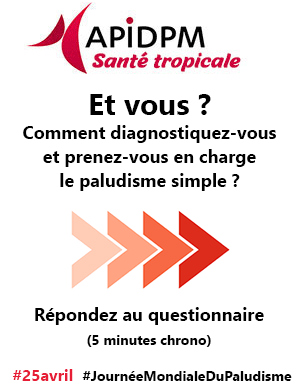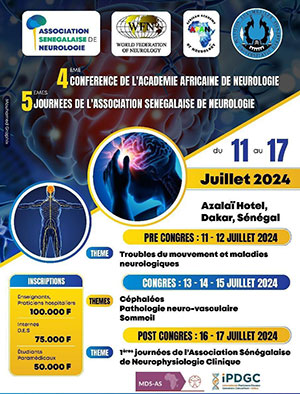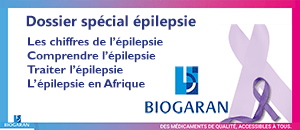← retour Santé tropicale
Accès aux sites pays ![]()
![]() BENIN
BENIN![]() BURKINA FASO
BURKINA FASO![]() CAMEROUN
CAMEROUN![]() CENTRAFRIQUE
CENTRAFRIQUE![]() CONGO
CONGO![]() COTE D'IVOIRE
COTE D'IVOIRE![]() GABON
GABON
![]() GUINEE
GUINEE![]() MADAGASCAR
MADAGASCAR![]() MALI
MALI![]() R.D. CONGO
R.D. CONGO![]() SENEGAL
SENEGAL![]() TOGO
TOGO
← retour Santé tropicale
Accès aux sites pays ![]()
![]() BENIN
BENIN![]() BURKINA FASO
BURKINA FASO![]() CAMEROUN
CAMEROUN![]() CENTRAFRIQUE
CENTRAFRIQUE![]() CONGO
CONGO![]() COTE D'IVOIRE
COTE D'IVOIRE![]() GABON
GABON
![]() GUINEE
GUINEE![]() MADAGASCAR
MADAGASCAR![]() MALI
MALI![]() R.D. CONGO
R.D. CONGO![]() SENEGAL
SENEGAL![]() TOGO
TOGO

Publié dans Médecine d'Afrique Noire 7009 - Août/Septembre 2023 - pages 456-462
 Traitement des plaies des tendons fléchisseurs en milieu tropical : quelle technique de réparation utilisée dans un contexte de sous équipement ?
Traitement des plaies des tendons fléchisseurs en milieu tropical : quelle technique de réparation utilisée dans un contexte de sous équipement ?Auteurs : L. Kaba, Asséré G.R.A. Yao Aboh, K.L. Krah, S.L. Akpro, A.J.R. Akobé, Z.M. Soro, Y. Blé Gbalé, J. Kouadio Ettien - Côte d'Ivoire
Introduction : Les traumatismes de la main sont fréquents dans les pays en voie de développement. Leur importance en fait des lésions majeures car elles mettent en jeu le pronostic fonctionnel de la main du patient avec un impact socio-économique important. Le but de ce travail était de décrire les lésions anatomopathologiques et d’évaluer le résultat fonctionnel des réparations des lésions traumatiques des tendons fléchisseurs de la main.
Méthodes : Il s’agit d’une étude prospective à visée analytique allant d’octobre 2020 à janvier 2022. Les patients âgés de plus de 15 ans ayant présentés exclusivement une lésion des tendons fléchisseurs dans un contexte traumatique, pris en charge par notre service et suivis ont été inclus. Les lésions anatomopathologiques ont été déterminées selon les classifications de l’International Federation of Societies for Surgery of the Hand (IFSSH) pour les doigts longs et de Tubiana pour le pouce. Le score de Strickland modifié a été utilisé pour évaluer le pronostic fonctionnel des doigts lésés. Toutes les analyses statistiques ont été faites avec SPSS 25.
Résultats : Une cohorte de 13 patients a été retenue avec un total de 29 doigts lésés et 49 lésions tendineuses. Les lésions prédominaient aux zones II et III respectivement pour 11 et 8 doigts. Tous les patients ont cicatrisé dans un délai moyen de 12 semaines (8-20 semaines). Concernant le pronostic fonctionnel, il était satisfaisant pour 11 patients dont 7 excellents.
Conclusion : la suture selon Kessler modifiée associée à la méthode de Duran a donné des résultats satisfaisants. Elle demeure ainsi une alternative de choix dans notre contexte.
Introduction: Hand injuries are common in developing countries. Their importance makes them major lesions, as they jeopardize the functional prognosis of the patient’s hand, with a significant socio-economic impact. The aim of this study was to describe the anatomopathological lesions and assess the functional outcome of repairs to traumatic injuries to the flexor tendons of the hand.
Methods: This is a prospective study with an analytical focus from October 2020 to January 2022. Patients over 15 years of age who presented exclusively with a flexor tendon injury in a traumatic context, who were treated by our department and followed up were included. The anatomopathological lesions were determined according to the International Federation of Societies for Surgery of the Hand (IFSSH) classifications for the long fingers and Tubiana for the thumb. The modified Strickland score was used to assess the functional prognosis of the lesioned fingers. All statistical analyses were performed with SPSS 25.
Results: A cohort of 13 patients was selected with a total of 29 injured fingers and 49 tendon injuries. Lesions were predominant in zones II and III for 11 and 8 fingers respectively. All patients healed within an average of 12 weeks (8-20 weeks). 11 patients had a satisfactory functional prognosis, 7 of which were excellent.
Conclusion: The modified Kessler suture associated with the Duran method gave satisfactory results. It is therefore an alternative of choice in our context.
Cet article est actuellement coté ![]() (1,0 étoiles) par les abonnés de Médecine d'Afrique Noire.
(1,0 étoiles) par les abonnés de Médecine d'Afrique Noire.
Il a été consulté 2716 fois, téléchargé 6 fois et évalué 1 fois.
Aucun commentaire n'a encore été ajouté à propos de cet article
Restez informés : recevez, chaque mercredi, la revue de presse de Santé tropicale. Inscriptions


Ce contenu gratuit vous est destiné :






![]() Adresse
Adresse
![]() Téléphone
Téléphone
![]() Contactez-nous
Contactez-nous
Actualités
Articles médicaux